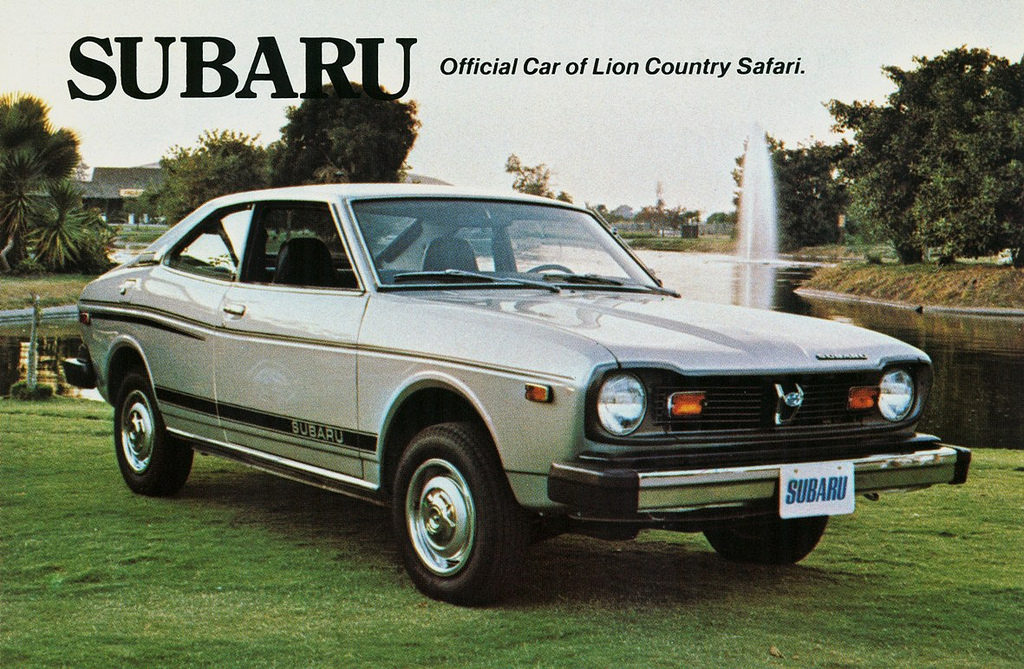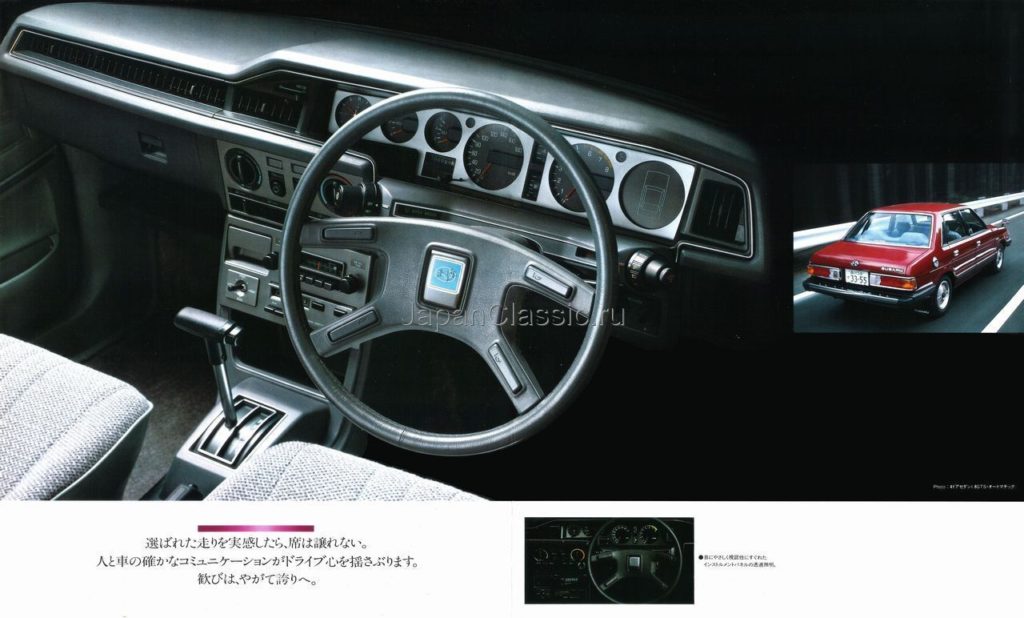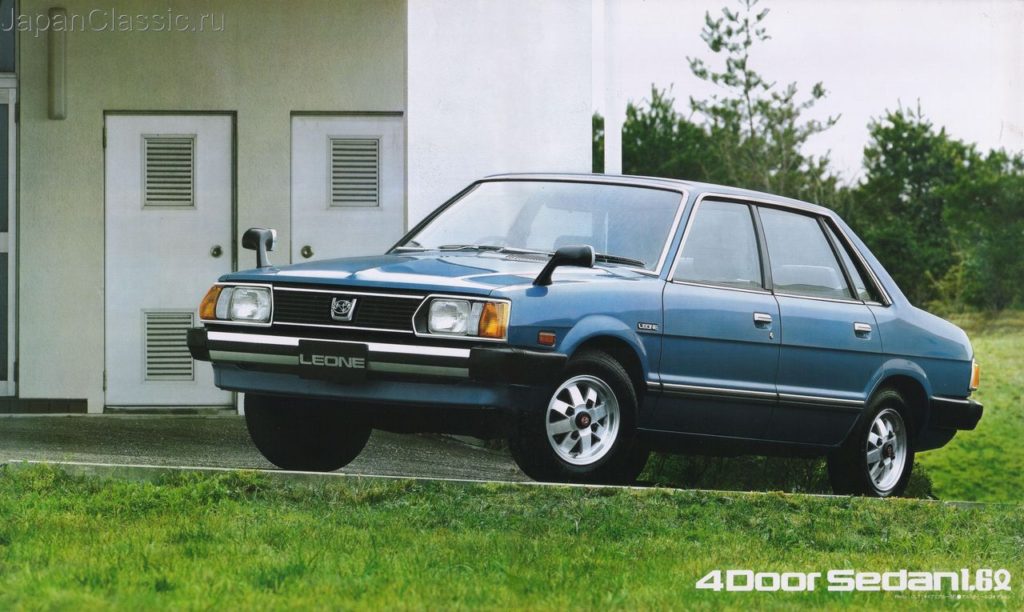Throwback Thursday: The Subaru that made Subaru, Subaru
This week’s Throwback Thursday was inspired by a Craigslist ad I came across the other day. It was for a 1989 Subaru Leone coupe with 274,000 miles and a 5-speed manual transmission. This really sparked my interest due to my deep love affair with 80’s and 90’s imports. Believe it or not, I owned a 1981 Volvo 242 for a little over a year, and have been strongly desiring to scoop up another 80’s car as a project since I sold it. After reading the ad, I thought to myself, “What even is a Subaru Leone?” It seems that most Subaru enthusiasts are passionate and knowledgeable about the newer, more popular models, and not so much the “vintage” Subarus that are often overlooked or forgotten about. This is one of those models.



The Subaru Leone has been called several other names across the world. Japan had always sold them under the name “Leone” (Italian for Lion), while North America sold them as “Loyales” and European markets referred to them as the L-series. It was even called the “Omega” in New Zealand. These cars were built from 1971 to 1994, making the Leone the third longest-produced model from Subaru, behind the Impreza (2nd), and Legacy (1st). The Leone was built to replace the Japanese-market-only Subaru 1000, and started to be phased out after the Impreza was introduced in 1992 as the Leone’s successor.


Here in the U.S., you may also know this car as the DL/GL, but back in the day Americans just called these cars “Subarus.” “Look at that Subaru, I drive a ’79 Subaru, the new Subaru coupe/wagon looks great!” and so on. Subaru was a growing brand. At the time, Subaru sold small cars to a country full of people driving cars twice the size. They were “one of those quirky and up-and-coming car companies.” Subarus were cars the average American didn’t know much about – cars that one might have seen and said “Oh, there’s one of those Subarus, I hear they can _______!” The Leone/Loyale was the Subaru that sparked interest in Americans and changed up the stereotypes of mediocre Japanese-import econoboxes. Think about it though, how many other mass-produced passenger cars from the 70’s and 80’s were offered in 4-wheel-drive, got great gas mileage, were dependable and had a high build quality? These qualities shot Subaru sales up once the word spread. These cars could be found everywhere up in mountain towns and northern cities during the winter. The Leone/Loyale became the unofficial car of the outdoorsman – because it could actually take them into the depths of nature and back without a struggle.


Now for a bit of history on the car. The Subaru Leone was brought over to North America in 1972 and spanned three generations in its lifetime. It was originally offered with a 1.4L EA63 engine up until it was replaced with the 1.6L EA71 in 1976. The car now made a whole 67 horsepower! Leones were offered with a 4-speed or a 5-speed manual transmission, and eventually a 3-speed automatic transmission starting in 1975. The cars were sold stateside in front-wheel-drive with trim levels of DL, GL, and GSR. They started being built with optional 4-wheel-drive in 1975 which is where the significance of these cars starts to come in. In 1977, something wonderful was created based off of the Leone coupe – the notorious Subaru BRAT. I would talk about the BRAT, but that’s better off being left for another article in the future. I’m saying that because this could very easily turn into a BRAT-focused article since I am so crazy about them. Back to the history of the Leone now.


The second generation of the Leone came in 1979, and things started picking up. They were now being made as two-door coupes, three-door hatchbacks, four-door sedans, and of course everyone’s favorite – the five-door station wagon variant. This generation of the Leone was now offered with a dual-range, 4-speed, 4-wheel-drive transmission that made it capable of any weather or terrain it found itself in. 1980 brought a new engine for the Leone. The cars started coming with a flat-four 1.8L EA81 engine, and in 1983 it was available with a turbo thrown in on certain models.


The third and final generation of this car is probably the most widely recognized. I’m sure some of you have seen one at some point, past or present. This generation just screams late-80’s/early-90’s styling, I mean look at it. Square, boxy, straight lines everywhere and almost “bland” looking (I know, how dare I insult Subaru’s design). But that’s what was in at the time, and it did well – people loved them. This generation came about in 1985. They were now being made as three-door hatchbacks, four-door sedans, and the practical and ever-so-popular station wagon. Subaru dropped the 1.6L engine for North American versions due to the lack of any usable power. The cars had another new flat-four 1.8L engine instead – the SOHC EA82 that made 90hp, and the turbocharged version that put out 115hp. The 5-speed manual transmission cars got a respectable 25 city/32 highway MPG on the normally aspirated engines. The later half of this generation had a slight facelift and tons of previously-optional amenities that were now standard. Some of these include a full digital instrument panel, cruise control, air conditioning, power steering, power windows, power locks and mirrors, and even a pneumatic suspension with selectable heights.



Although this car died off the year I was born, I remember seeing one every now and then and sometimes not even recognizing that it’s a Subaru. I’m so used to seeing Imprezas, Foresters and Outbacks that I sometimes forget the earlier days of Subaru. Cars like the Leone paved the way for Subaru in North America, and it deserves recognition and appreciation from us enthusiasts. These cars are becoming harder and harder to find unfortunately, just like any other vintage car. It’s a shame seeing the less common ones, like the coupe for example, sitting at a junkyard or rusted halfway up its doors, but hey, at least they were out being used and enjoyed by their owners, and that’s what’s important. So thank you, Leone/Loyale/DL/GL for making such a large impact on Subaru’s North American market. Without you, there may have not been a Legacy, Impreza, or even Forester brought stateside. If one day I can find and afford to own one of these alongside the countless other projects I’d want, you bet I’d buy one.
By Ethan Pfab – @indecisivewagon
Image sources:
https://goo.gl/xGsCbS
https://goo.gl/Ezs8Lo
https://goo.gl/FtcRgH
https://goo.gl/C7EHMQ
https://goo.gl/Xcm7KY
https://goo.gl/ju8VSq
Related Posts
There has been a critical error on this website.


